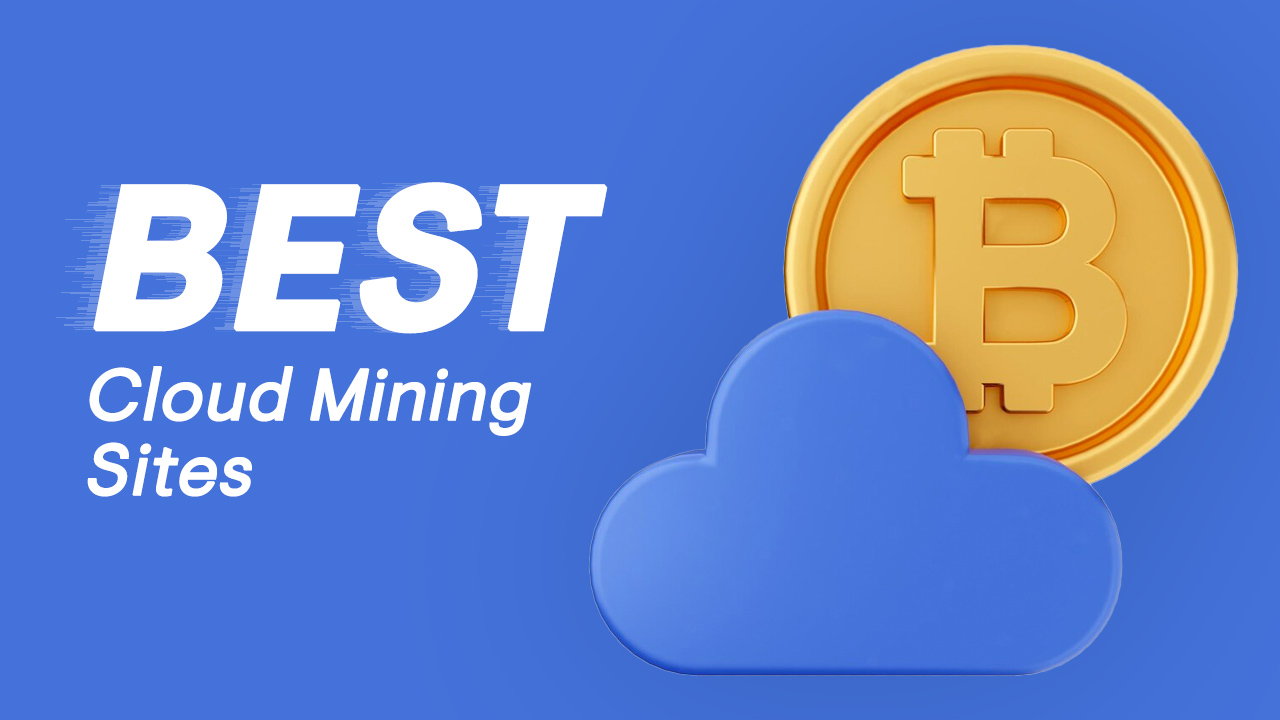Best Cloud Mining Apps 2025: Top Providers for Daily Earn

Cloud mining has matured from a speculative sideshow into a structured way for beginners and professionals to participate in Bitcoin mining without buying noisy hardware or negotiating power contracts. In 2025, the best crypto mining providers emphasise transparency, real-time monitoring, and flexible contracts you can manage from a phone. This guide distils the landscape into five credible cloud mining apps that help you aim for daily passive income, while staying realistic about risks like price volatility, network difficulty, and fees.
The purpose here isn’t hype. Cloud mining is not a get-rich-quick scheme; it’s closer to yield farming’s conservative cousin: careful input, predictable mechanics, and variable output. That means understanding the difference between hashpower marketplaces, hosted ASICs, and fixed-term contracts; knowing how pool fees, maintenance fees, and withdrawal fees affect your yield; and verifying that a provider actually runs real machines in real data centres. The five options below offer track records, disclosures, or public footprints you can examine.
How to evaluate cloud mining providers in 2025
The first filter is operational credibility. Look for companies with visible infrastructure, audited or at least publicly scrutinised footprints, and business models that make sense under conservative Bitcoin prices. Public-market exposure, disclosures, or industry partnerships can be helpful signals, as can mobile apps that provide live metrics from poolside dashboards. Fees are next: maintenance fees can eat your yield, while pool fees and withdrawal fees layer on top.
The 5 promising cloud mining apps for daily passive income
1) Bitdeer: industrial infrastructure with a user-friendly app
Bitdeer is a vertically integrated mining company with global data centres and a mobile app that lets you manage cloud plans and hosted machines in one dashboard. For users, the appeal is twofold: enterprise-scale operations behind the scenes and a consumer-grade app up front. Bitdeer communicates like a serious infrastructure provider, publishing location details, operational updates, and expansion plans. In 2025, it will also discuss AI/HPC initiatives while continuing to mine Bitcoin at scale, which indicates diversified revenue streams that can potentially stabilise operations during crypto market swings.
Fees and yields depend on the specific plan you select. Expect a blend of pool fees and operational costs, either baked into upfront pricing or charged as a daily maintenance rate. The key is to map your expected BTC price, network difficulty, and fee structure against contract length, then add a buffer for variance.
2) BitFuFu: Bitmain-affiliated services with hosted ASIC options
BitFuFu stands out thanks to its strategic link to Bitmain, the industry heavyweight behind ANTMINER hardware, and its NASDAQ listing under FUFU. In late October 2025, BitFuFu expanded its hosted mining offerings using ANTMINER S21+ Hyd. Machines—a sign that the company continues to secure modern rigs and offer them via purchase-and-host or cloud plans. For users, that means access to current-gen ASICs, plus a platform that’s been reviewed widely across crypto education sites.
When modelling returns, keep an eye on per-terahash pricing, power assumptions, and any maintenance fees associated with hosting. Hosted rigs behave like a midpoint between owning hardware and renting abstract contracts: you don’t house machines yourself, but you still tie performance to the specific model’s efficiency.
3) NiceHash: the hashpower marketplace for flexible strategies
Unlike a classic cloud mining site, NiceHash is primarily a hashpower marketplace. Buyers rent compute from independent miners and direct it to mining pools of their choice; sellers provide spare hashrate and get paid. For someone seeking daily passive income, the advantage is strategy: you can route rented power to specific algorithms or pools, experiment with pricing, and take advantage of market inefficiencies without owning hardware.
Because you’re bidding for hashrate on an open market, profitability swings with pool luck, rental price, and coin price. That flexibility cuts both ways: on good days, you can outperform flat cloud contracts; on tight days, you may underperform. The best approach is to treat NiceHash as a tactical tool—allocate a portion of your mining budget to learn the marketplace, log outcomes, and refine routing.
4) ECOS: fixed-term cloud mining contracts with a clean UX
ECOS offers fixed-term Bitcoin cloud mining contracts managed through a clear web and mobile interface, plus options to rent or purchase ASICs with hosting. Reviews in 2025 highlight its beginner-friendly design, contract calculator, and account-level security features, which are useful if you prefer straightforward contract terms over marketplace bidding. The trade-off is flexibility: fixed contracts smooth out some operational complexity but give you fewer dials to turn if market conditions shift.
With ECO, scrutinise minimum contract sizes, maintenance fees, payout cadence, and withdrawal fees. Because ECOS focuses on Bitcoin rather than a long tail of altcoins, your thesis is simpler: you’re effectively betting on the economics of BTC mining during your contract term. If you have a longer view on the Bitcoin cycle or want to ladder start dates across several months, ECOS’s structure can help you build a staged approach to passive income exposure.
5) ViaBTC: mining pool pedigree with cloud contracts

ViaBTC’s reputation began with its mining pool, and it also offers cloud contracts you can manage online. The appeal is pool-level transparency, clear product pages, and the credibility of an operator known first for mining rather than for aggressive marketing. If you value a provider that speaks in hashrate, PPS/PPLNS, and on-chain realities, ViaBTC is a sensible candidate. In 2025, content and product pages highlight contract access alongside typical poolside features, which gives you a mix of real-time monitoring and automated payouts.
As with all cloud contracts, drill into term length, fee structures, and payout schedules. Because ViaBTC already operates at the pool level, experienced miners often appreciate that they can see the same block rewards and pool stats publicly available to all participants, then match those with their contract dashboards.
What “daily passive income” really means in cloud mining
“Daily passive income” is a tempting phrase, but in cloud mining, it has specific moving parts. Your daily payout depends on four variables: the coin’s price, the network’s mining difficulty, your allocated hashrate, and total fees. When BTC rallies, your daily earnings in fiat terms can jump even if your sat/TH production stays flat. When difficulty rises, your satoshis per day can fall even as the price holds. That is why many miners ladder contracts across weeks or months, or combine a fixed contract with a hashpower marketplace allocation to adjust in real time.
Another reality is custody. Most providers pay out to your internal balance first. From there, you’ll withdraw to a self-custody wallet or exchange, typically incurring a withdrawal fee. If you’re compounding, you might keep accruals in place until fees are efficient, then sweep them to a cold wallet on a set cadence.
Red flags and realistic expectations
Cloud mining attracts scams because it’s easy to claim ownership of remote machines you’ll never see. In 2025, several investigative and industry sources have warned that many so-called “cloud mining platforms” are really high-yield schemes with fake dashboards. Promises of fixed daily ROI in dollars, guaranteed principal, or eye-popping signup bonuses are common tells.
Head-to-head: which cloud mining app fits which user?
If you want a clean mobile experience with industrial backing, Bitdeer and BitFuFu feel like natural first stops. Bitdeer’s app centralises cloud plans and monitoring; BitFuFu’s Bitmain connection and hosted ASICs appeal to users who want up-to-date machines. Those who prefer tactical control and experimentation can try NiceHash, where hashpower bidding lets you route compute dynamically and potentially squeeze more from favourable hashprice conditions.
Fees, fine print, and the math behind your payout
Start by estimating gross production: hashrate times expected coins per day, conditioned on current network difficulty. From that, subtract pool fees, maintenance fees, and a buffer for downtime.
Once you’modelledled fees, examine operational disclosures. Public-facing app pages are a helpful starting point for seeing what you can control as a retail user and how providers talk about uptime, monitoring, and updates.
Risk management for sustainable mining income

Cloud mining returns are path-dependent. That means the sequence of prices and difficulties matters almost as much as the averages. To blunt path risk, break deposits into tranches and spread start dates. If you’re using a hashpower marketplace, cap order sizes per day and evaluate BTC per TH before scaling.
Final Thoughts
Cloud mining in 2025 isn’t magic; it’s a service market riding on real machines, real power, and real fees. The five crypto mining providers highlighted here—Bitdeer, BitFuFu, NiceHash, ECOS, and ViaBTC—combine operational visibility with consumer-level tools, including cloud mining apps that help you track daily production.
FAQs
Q: Is cloud mining still profitable in 2025?
It can be, but profitability depends on BTC price, network difficulty, and total fees. Providers with transparent fees and efficient hardware give you a better starting position, but you still need to model outcomes under conservative price assumptions and accept variability in daily payouts.
Q: Which cloud mining app is best for beginners?
If you’re new and want a polished app with clear plan management, Bitdeer is compelling; ECOS is also approachable thanks to its fixed-term cloud mining contracts and built-in calculators.
Q: How is NiceHash different from typical cloud mining sites?
NiceHash is a hashpower marketplace. Instead of buying a fixed contract from a single provider, you rent hashrate from sellers and route it to pools you choose. This offers more control—and more homework.
Q: Are there common cloud mining scams I should avoid?
Yes. Be wary of platforms promising fixed dollar returns per day, large signup bonuses, or guaranteed principal. In 2025, many “cloud mining” scams have simply rebranded as “cloud computing” investment packages.
Q: Can I mine coins other than Bitcoin with these providers?
Most reputable services now focus on Bitcoin because it dominates PoW economics, but some platforms and pools support other algorithms or offer auto-conversion features.
Read more: Top Crypto Mining Sites for 2025, Best Cloud Mining Platforms

